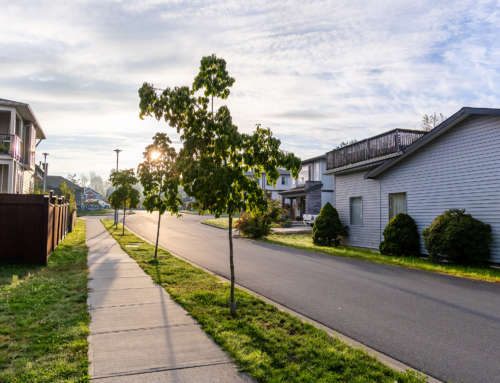Philadelphia’s housing market continues to shift with each season, and fall often reveals signals about buyer behavior, inventory levels, and pricing that shape the year ahead. While national headlines frequently focus on broad real estate movements, the local market in Philadelphia follows patterns tied to employment, universities, neighborhood development, and regional migration. For sellers and buyers alike, understanding how autumn affects the market provides a valuable edge.
Buyer Demand in a Seasonal Context
Fall tends to draw a different type of buyer compared to the energy of spring and early summer. Those still searching after September are often serious and prepared to make a decision quickly. They may have already toured homes in summer, lost out in competitive bidding, or waited until the seasonal slowdown for less competition. In Philadelphia, where neighborhoods vary dramatically in style and price, fall demand often concentrates in areas with strong schools, proximity to Center City employment, and easy commuter access. The season also attracts first time buyers who were priced out earlier in the year but return as competition softens.
Inventory Levels and Their Impact
Inventory traditionally shrinks in fall as fewer homeowners list compared to spring. This lower supply can support pricing, especially in popular neighborhoods. Buyers may face fewer options, but serious listings stand out more. Sellers who bring a well prepared property to the market in October can benefit from this reduced competition. According to the 2025 Philadelphia housing forecast from mmgrea.com, the metro area continues to balance modest inventory with steady demand, creating a relatively stable environment heading into the end of the year.
Pricing Trends Moving into the Season
Prices in Philadelphia have remained resilient despite interest rate fluctuations. In the fall, pricing trends tend to flatten compared to the acceleration seen in spring. Sellers should not expect the same multiple offer scenarios that often occur in May or June, but steady values are common. Buyers motivated to close before winter may be more flexible in negotiations, though they remain cautious about overpaying. Philadelphia Magazine’s review of 2025 real estate activity notes that urban neighborhoods with strong redevelopment momentum, such as parts of Fishtown and Point Breeze, continue to see competitive pricing even as the broader market stabilizes, as reported on phillymag.com.
Interest Rates and Buyer Psychology
Interest rates remain one of the most influential factors this fall. Rising mortgage costs affect monthly affordability and reduce the number of buyers able to compete at higher price points. Sellers need to recognize how these changes shift buyer psychology. A listing priced aggressively above recent comparables may discourage buyers who are calculating higher monthly payments. On the other hand, a fairly priced property supported by strong presentation can still generate activity even in a high rate environment. Buyers motivated by relocation or life events continue to transact, though they negotiate more carefully.
The Role of University and Employment Cycles
Philadelphia is home to several universities, major hospitals, and corporate centers. These employment and academic cycles influence fall real estate trends. New hires, faculty appointments, and medical professionals relocating for work contribute to steady buyer interest in September and October. Rental demand also pushes some tenants into purchasing if they find affordability aligns better with ownership. Suburban counties like Bucks and Montgomery benefit from these cycles as families prefer larger homes within commuting distance while retaining suburban schools and lifestyle. Listings in these areas often gain traction in fall when employees and families plan long term stability before the new year.
Neighborhood Dynamics in Autumn
Neighborhoods across Philadelphia show different fall behavior. In Center City, condos and smaller properties attract professionals looking for convenience before winter. In suburban style neighborhoods within the city, such as Roxborough or Chestnut Hill, fall highlights outdoor appeal through tree lined streets and historic charm. Buyers visiting these areas in October often respond positively to the seasonal setting, making curb appeal even more important. In the surrounding suburbs, homes with larger yards benefit from fall foliage, creating an attractive first impression that complements marketing efforts.
Preparing to Sell in a Fall Market
Sellers who plan to enter the fall market must adapt strategy to seasonal realities. Presentation should emphasize warmth and readiness for the cooler months. Marketing timelines should be condensed to take advantage of active buyers before the holiday season slows activity. Accurate pricing aligned with fall conditions avoids unnecessary delays. Homes that are move in ready, with serviced heating systems and seasonal maintenance completed, reassure buyers who want a smooth transition. For those considering listing now, exploring available options in Philadelphia can provide a benchmark. Albright Real Estate offers access to detailed listings such as homes for sale in Philadelphia at albrightrealestate.com. Buyers who want to balance suburban living with proximity to the city can also view homes for sale in Montgomery County at albrightrealestate.com.
What to Expect Heading Into Winter
As fall progresses into late November, the pace of the market slows. Sellers who want to capture the best outcomes should aim to list by early October. Buyers active in late fall are often relocating or driven by deadlines. They may be willing to compromise, but transaction volume decreases. Heading into winter, Philadelphia’s market generally holds steady rather than experiencing sharp declines, reflecting the city’s balanced mix of urban and suburban housing stock. Looking to early 2026, forecasts suggest that stability will continue with moderate growth in key neighborhoods.
Conclusion
The Philadelphia housing market in fall reflects both opportunity and caution. Lower inventory, motivated buyers, and steady pricing create a favorable environment for well prepared listings. At the same time, rising interest rates and shorter marketing windows mean that strategy and execution matter more than ever. If you are planning to buy or sell in Philadelphia this season, working with an experienced team ensures your decisions are guided by local insight and timely data. Contact Albright Real Estate today at albrightrealestate.com to align your goals with the market realities of fall and position yourself for success.








